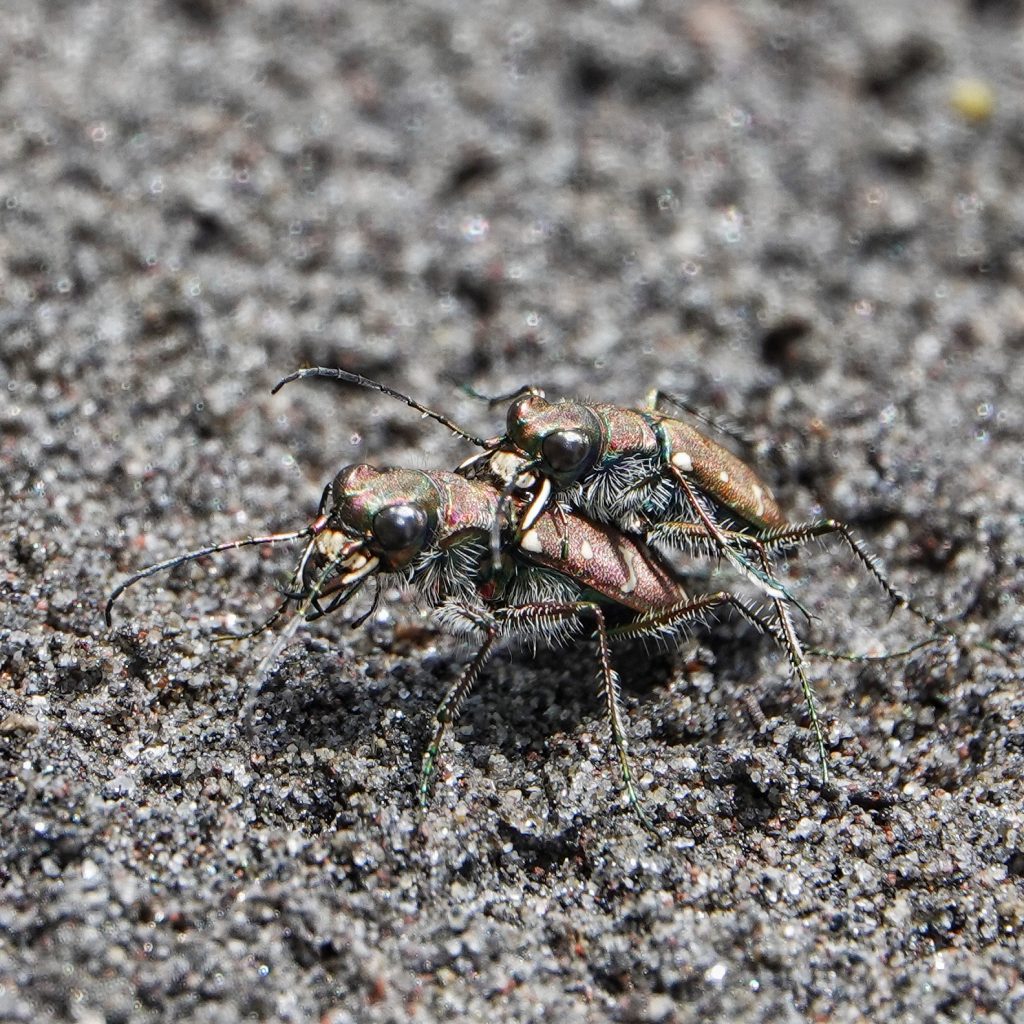
On one of my recent outings with my nbo we were up on the NF Toutle River. Morgan had stepped on a nail the day before while remodeling a bedroom into a home office, and wasn’t up to an extended walk, so we sat in the shade and chatted. They had wisely brought a chair, but I hadn’t, and after awhile I got stiff sitting on the ground. So I said, ‘I’m gonna see if there are tiger beetles down there’, and climbed down the bank. Where, lo and behold, there were indeed tiger beetles. It always makes me feel like much less of an alien in the ecosystem when things like that occur. It was a fairly small area of glacial sand and remnant ash from the eruption of St Helens, and I soon discovered that if I remained fairly still the beetles would stay in the area, while I snapped away with the camera.

The ones I could see clearly were all Cicindela repanda (Bronzed Tiger Beetles), which are always fun to watch as they dash hither and yon. So I took a bunch more photos, and then wandered off to check out the distinctive rushes that were nearby, which turned out to be Juncus effusus. But it wasn’t until I got home and was cropping my photos that I realized I had about a dozen photos of a mating pair of Cicindela oregona! This was a new species for me, and one I was excited to find, although it takes some of the joy out of it when it is only recognized after the fact. One pair of beetles in a bunch of similar photos seemed kind of boring for a profile, and I needed more information on the J. effusus anyway, so a couple days later I returned to the spot.
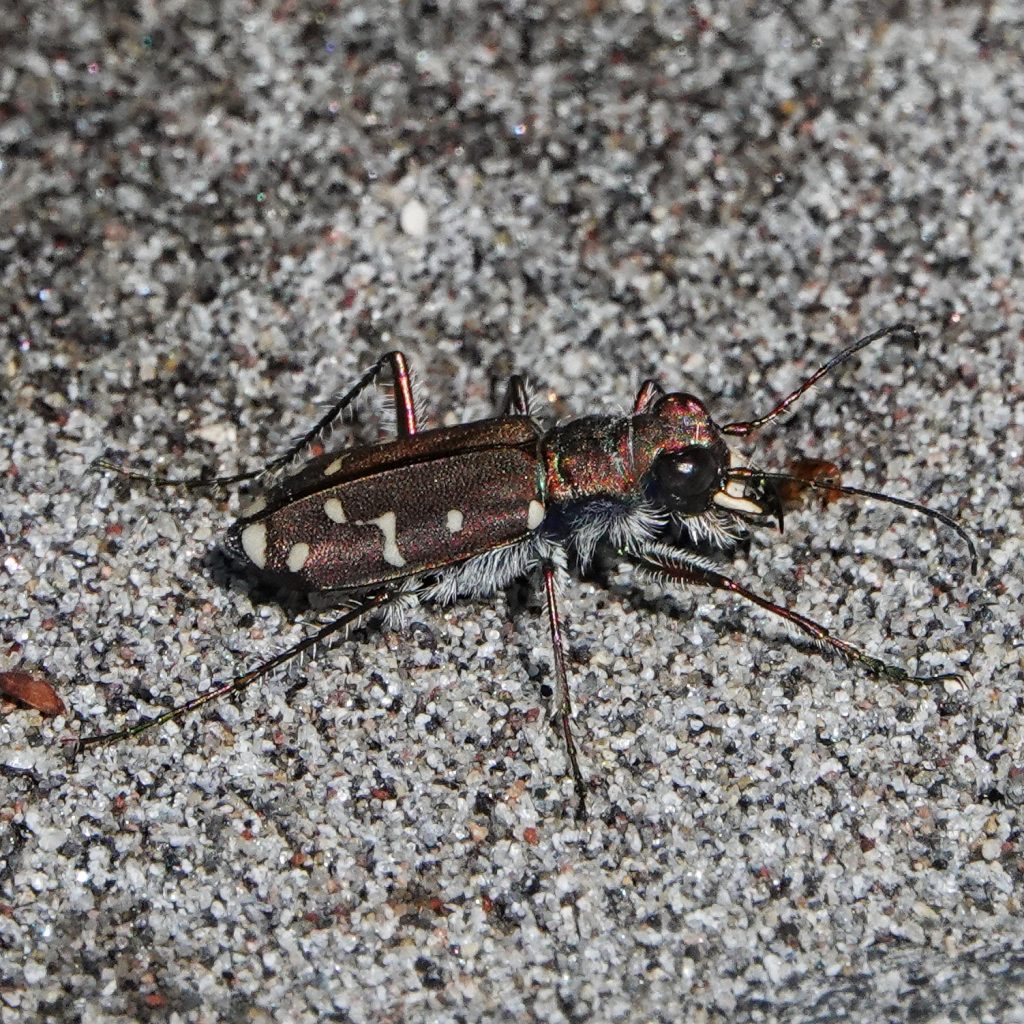
It turned out that there were quite a few Western Tiger Beetles along that stretch of riverbank. And it was just poor observational skills on my part that made me fail to notice them the first time. They were slightly larger and darker in ground color than the Bronzed Tiger Beetles, as well as being more active, and the lack of a contiguous stripe on the front shoulder wasn’t that hard to spot, once I was paying attention. I probably saw a hundred or so tiger beetles in the 60 or 70 yard stretch I explored, and they seemed about equally split between C. repanda and C. oregona.
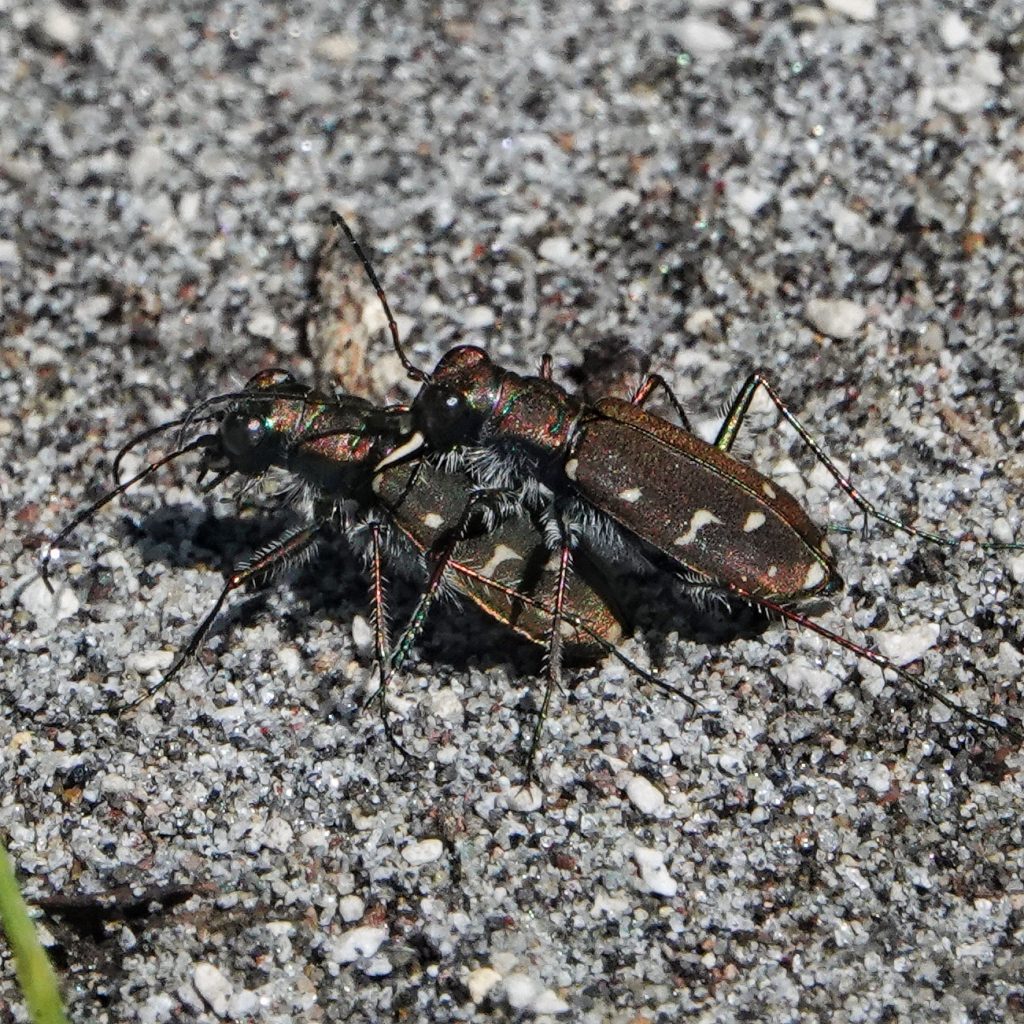
I don’t know if it was by choice or was random, but the more open areas seemed to have more Westerns, and the areas with a lot of exposed cobbles and vegetation seemed to have more Bronzeds. Since I know tiger beetles prefer a clear racetrack because they can run themselves blind (since their optic nerve can’t process photons fast enough to keep up with the pace; see here), and the only inter-generic aggression I saw was directed at the Bronzeds by the Westerns, I couldn’t help but wonder if the Westerns were taking over the speedways with the least obstacles. But it may have also been a matter of temperature and humidity (such as is talked about in Schultz, et al.;1987), since the areas with more cobbles tended to also be damper and closer to the river, and I would guess it was only about 75⁰ at this time, which is cooler than the temps at which C. oregona began seeking relief in Schultz’s study.
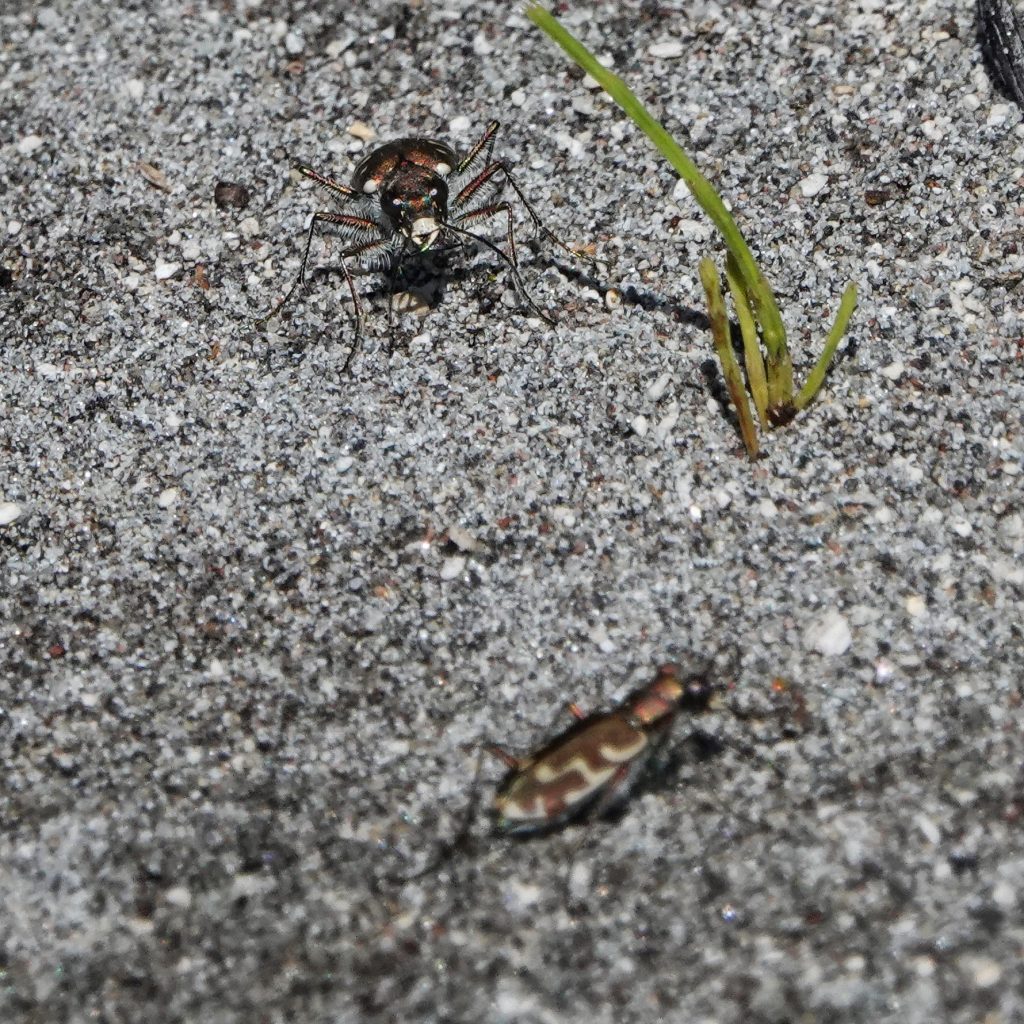
According to a paper (Duran/Gough; 2020) that came out a couple years ago and cited molecular data, tiger beetles are no longer a subfamily of Carabidae, but are instead their own family of beetles, Cicindelidae. It remains to be seen whether this taxonomic change will be accepted by coleopterists around the world (BugGuide and Wikipedia haven’t changed their classification), and I certainly don’t have a pony in the race, but it sure seems to have made many tiger beetle fans happy, and I’ve adopted it mostly as a lazy man’s hedge against having to go back and change things.
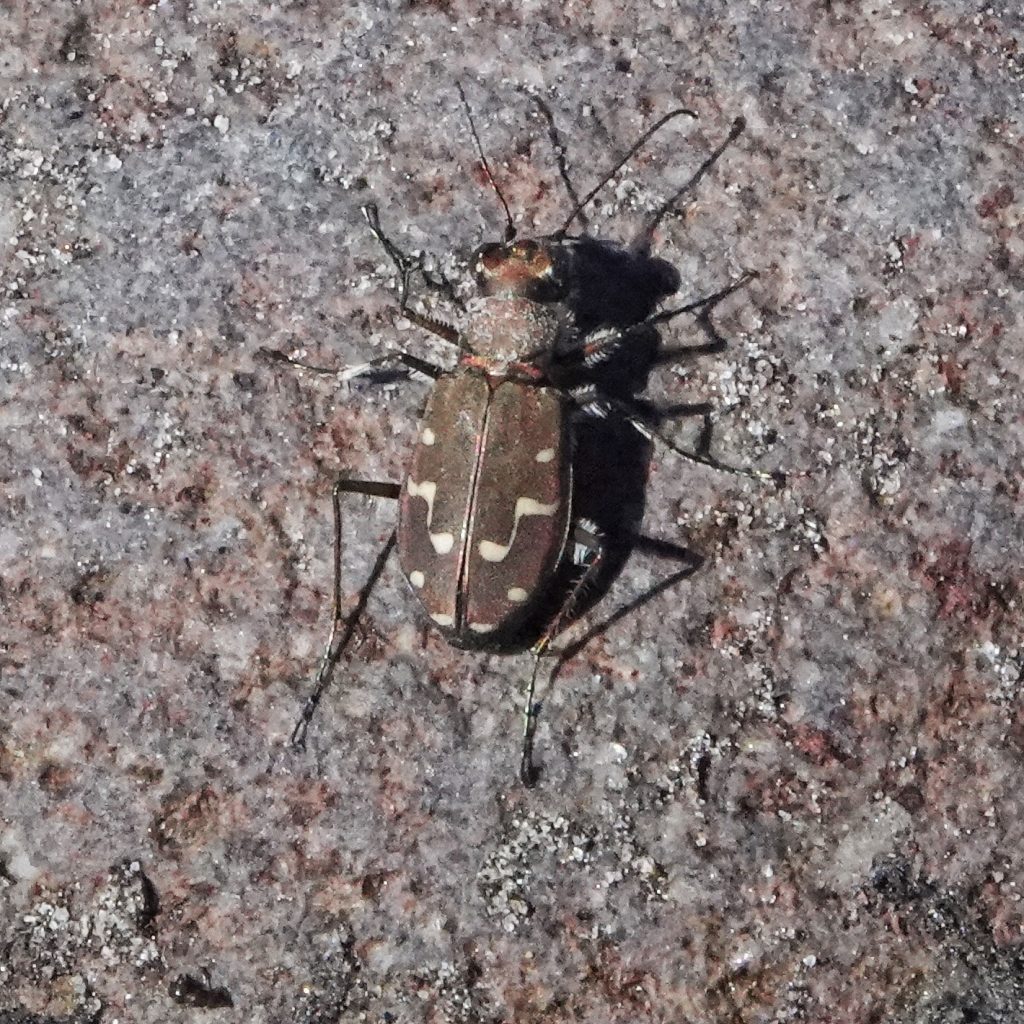
Description-Medium sized (11-13mm) green to brown, purple, or black tiger beetle with shoulder marking reduced to a dot that is not connected to the dot behind it in the elytral field, a midline mark that may be reduced or interrupted but always form a sharp elbow, and an apical mark that is not connected to the dot ahead of it in the elytral field; pronotum is a trapezoid; lacks setae on frons; clypeus and mandibles ivory.
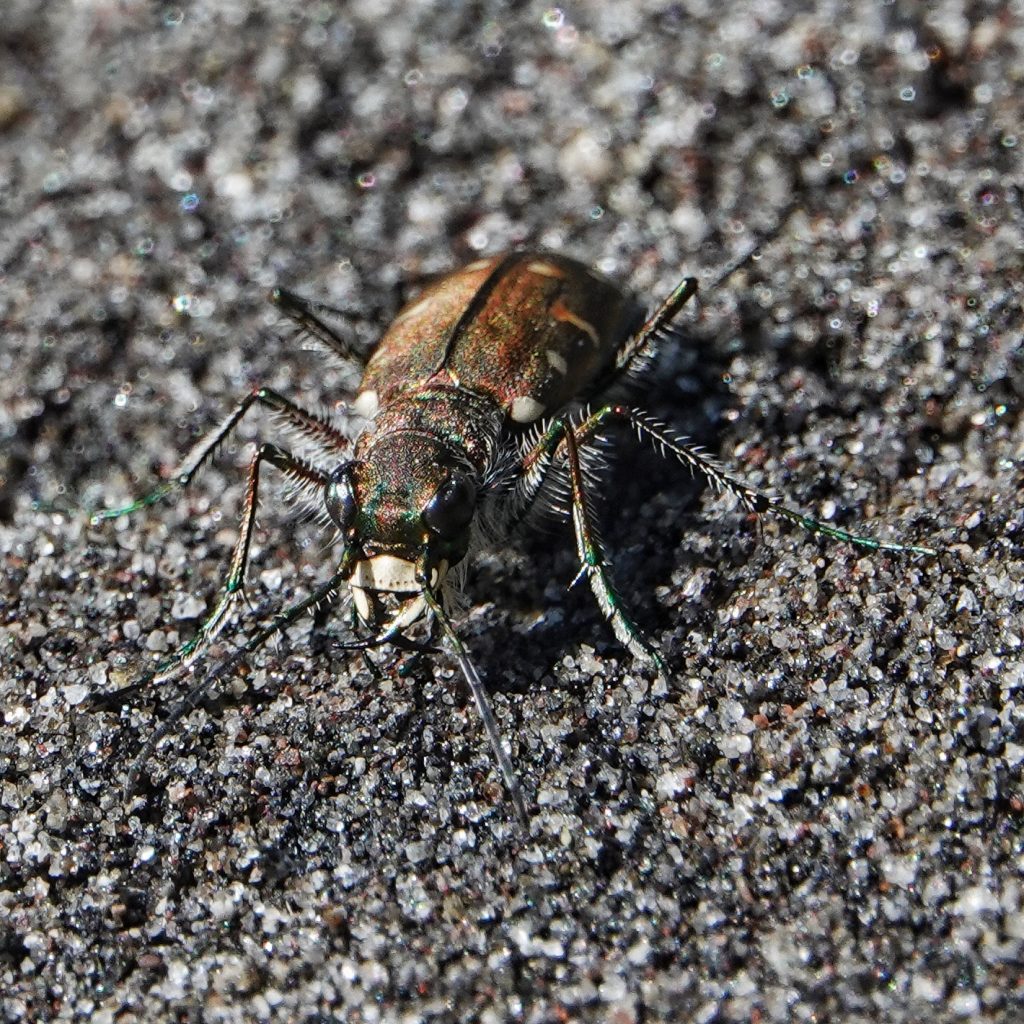
Similar species– Cicindela repanda has a roughly cylindrical pronotum, erect setae on cheek and frons, contiguous shoulder mark in the shape of a ‘C’, and the apical mark is attached to the extension into the elytral field; C. depressula has middle line curved, and lacks setae on frons; C. hirticollis has no setae on cheek, and somewhat g-shaped shoulder marking; C. bellissima shoulder line points toward rear, has 4-5 setae on first antennal segment, only found in coastal dunes; C. purpurea lacks shoulder marks, medial mark is curving, and apical marks not connected.
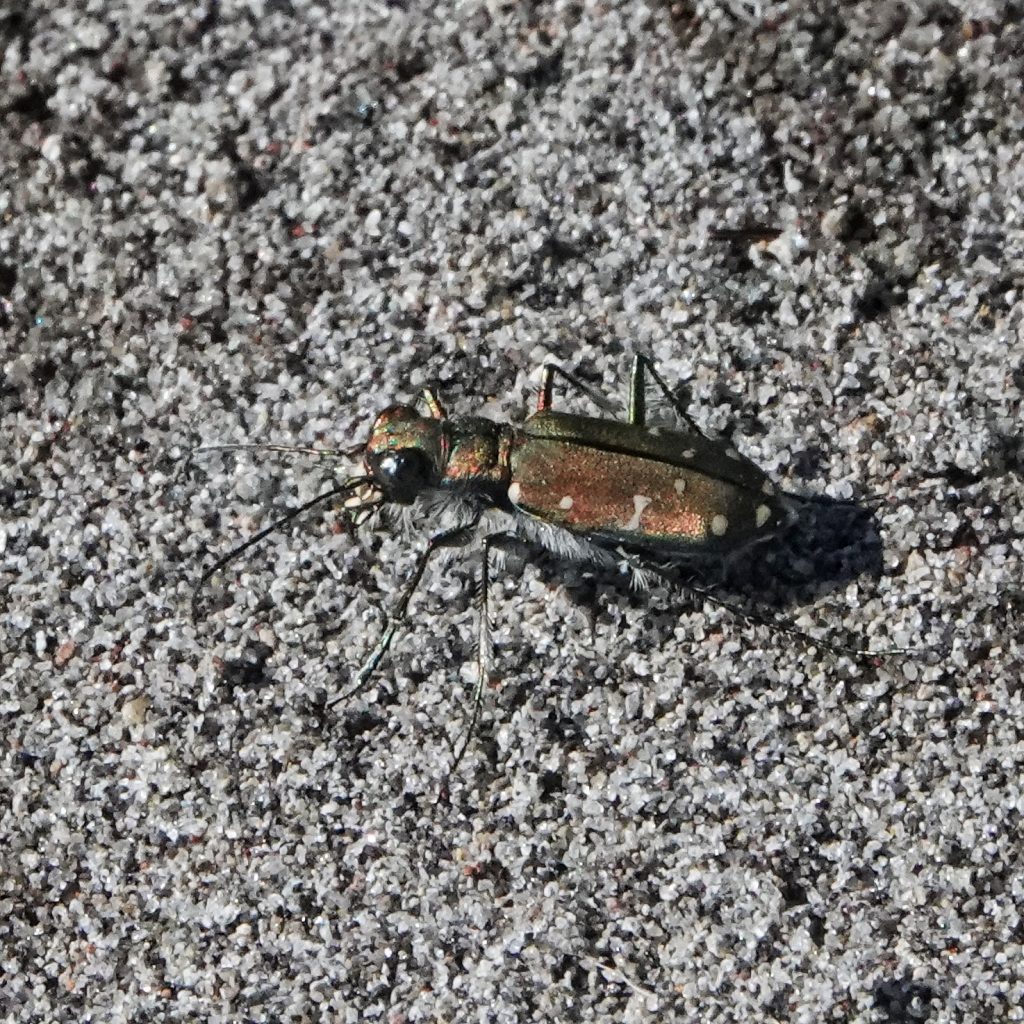
Habitat-Shores and shorelines of both still and moving water (including the ocean), and in sandy upland areas near a water source, up to 7,000’.
Range-Western North America; region wide in appropriate habitat.
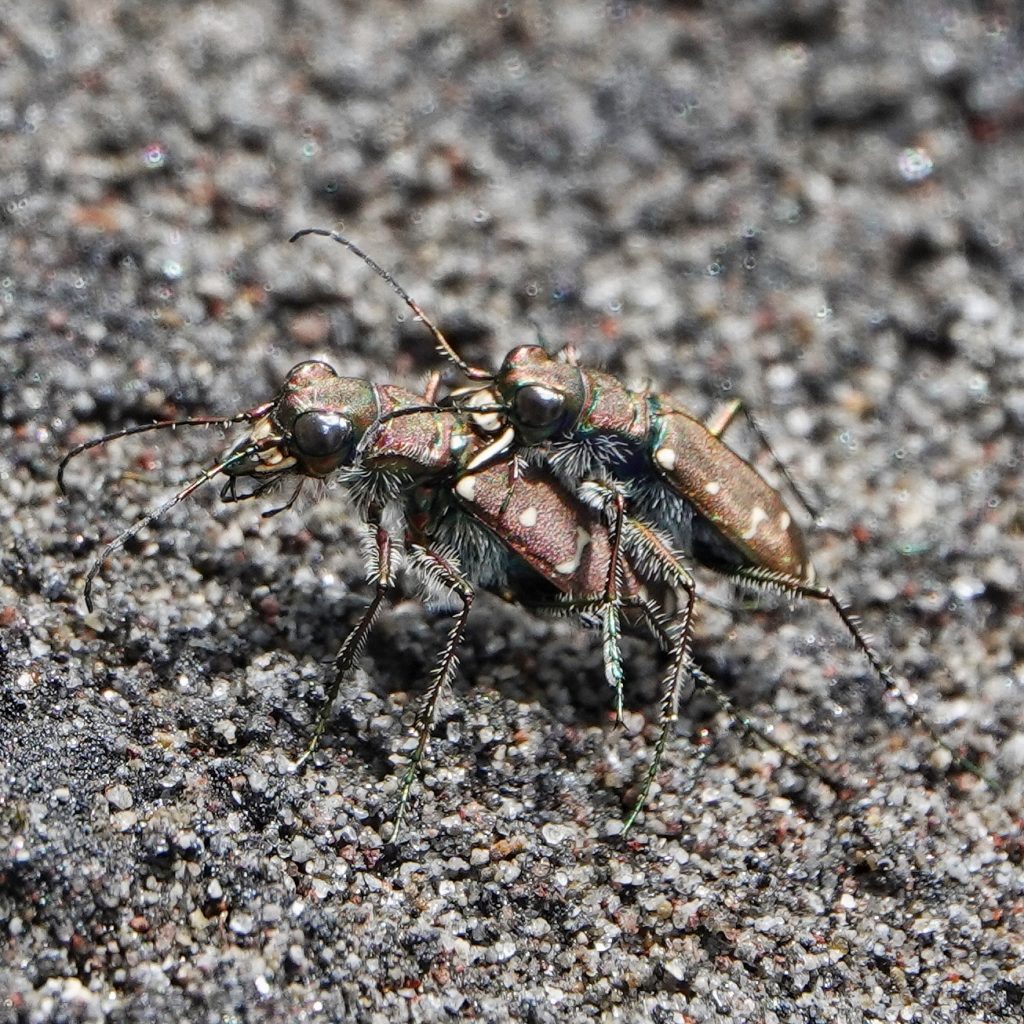
Eats-Whatever they can catch and subdue
Eaten by– Larvae are parasitized by larvae of the bee fly, Anthrax georgicus; insectivores that can catch and subdue them.
Adults active-April to October
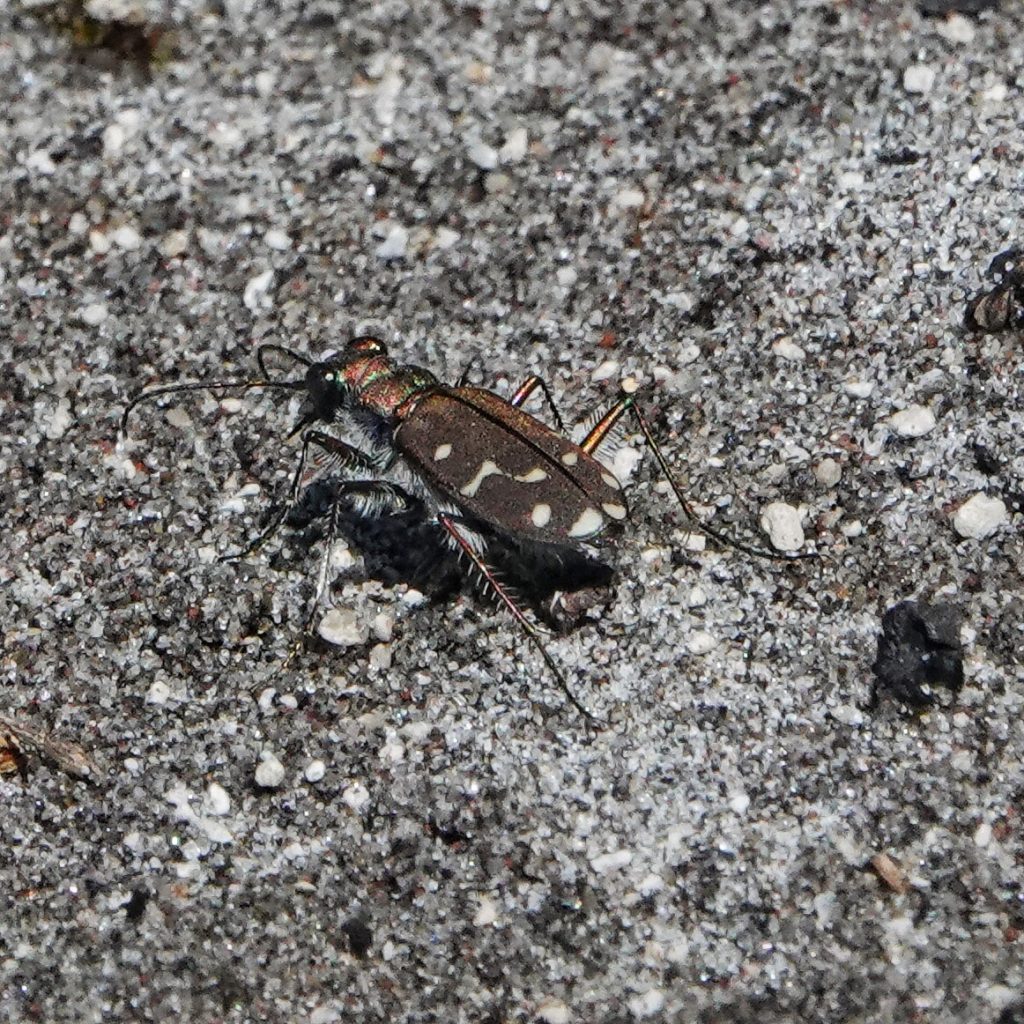
Life cycle-Adults that have overwintered start breeding in mid spring; females test the soil for moisture, texture, mineral content, and temperature, and oviposit in suitable locations; larvae construct 12-30cm deep burrows in which they live and from which they hunt; larvae go through 3 instars, and both larva and adults overwinter in diapause; may live up to 2 years.
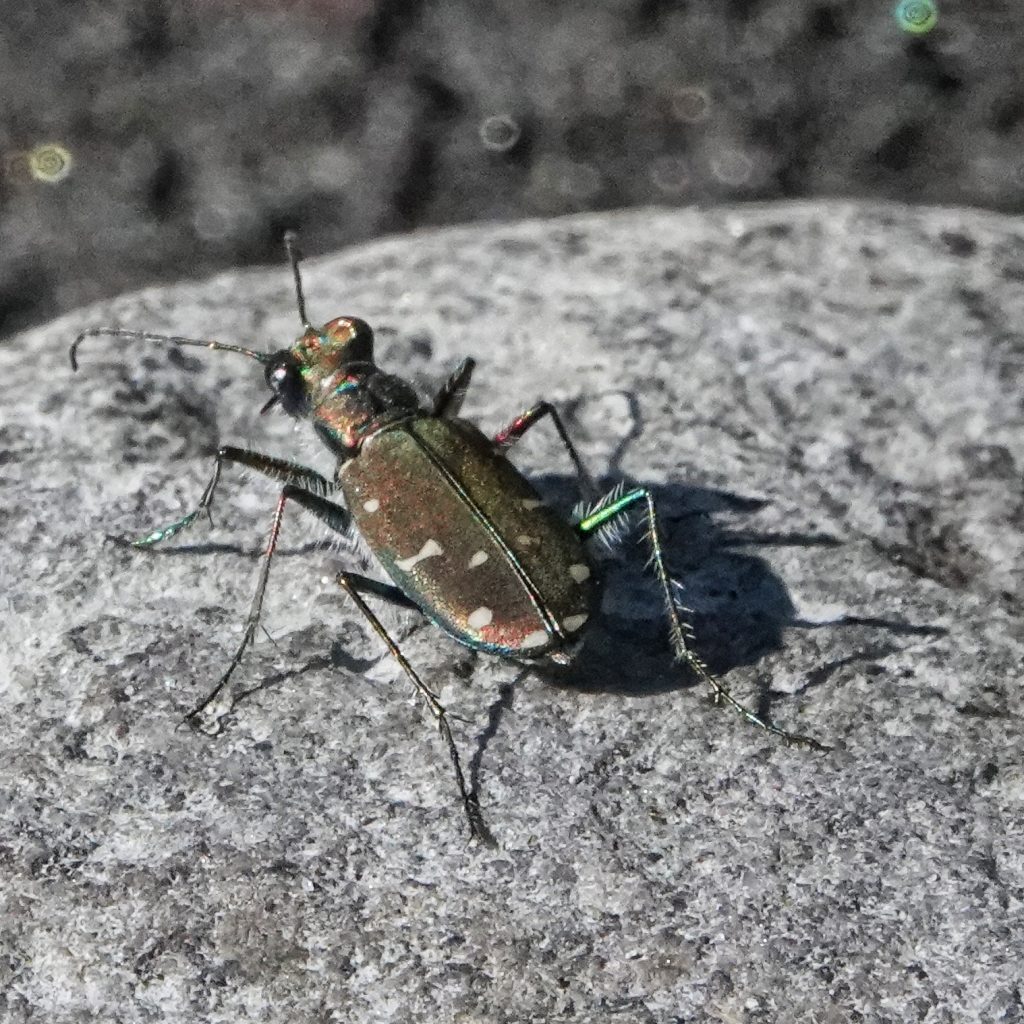
Etymology of names–Cicindela is the Latin word for ‘a glow worm’. As far as I can tell tiger beetle larvae do not glow, so I don’t know to what this refers. The specific epithet oregona is from the location of the type specimen, although Oregon was still a territory in 1857 when LeConte named this beetle, and included Oregon, Idaho, and Washington states.
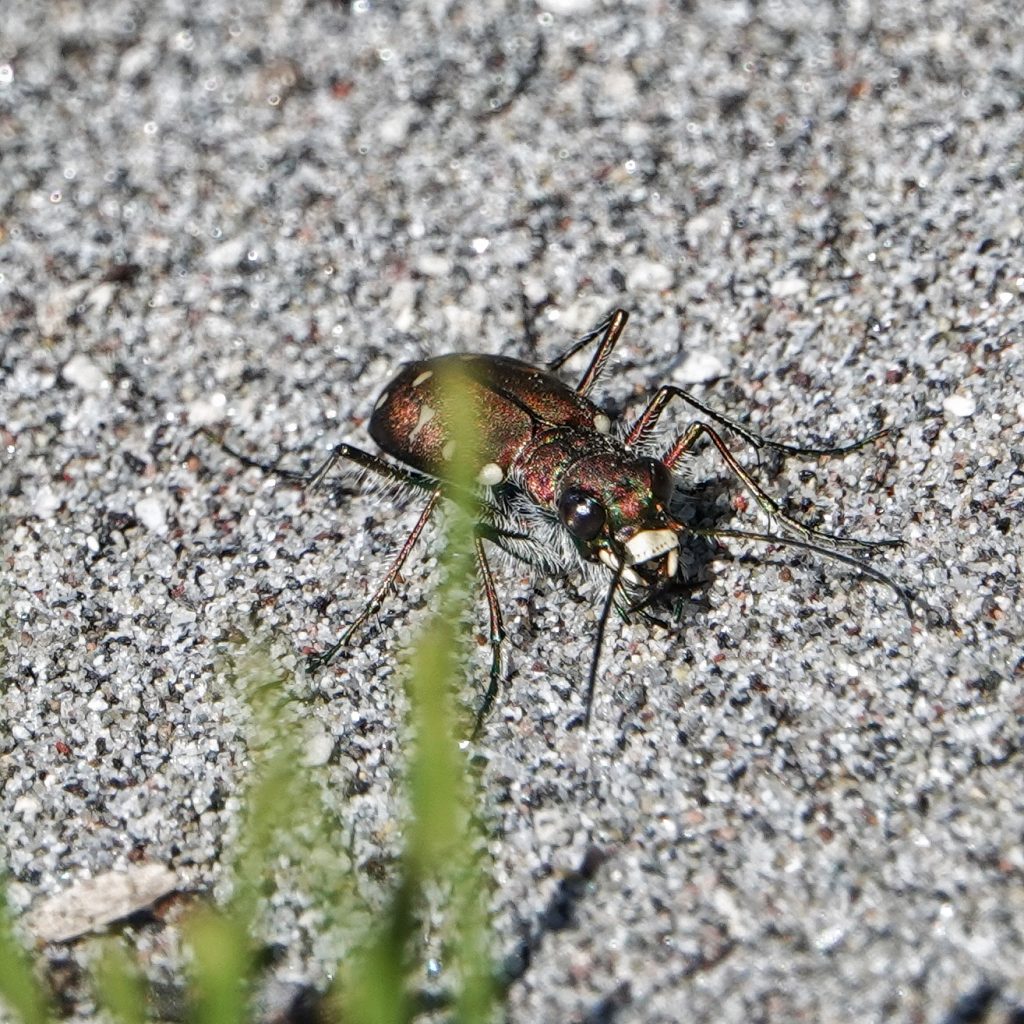
https://bugguide.net/node/view/19048
https://www.mtpr.org/arts-culture/2019-02-05/bug-bytes-tiger-beetles
https://pubmed.ncbi.nlm.nih.gov/28311517/
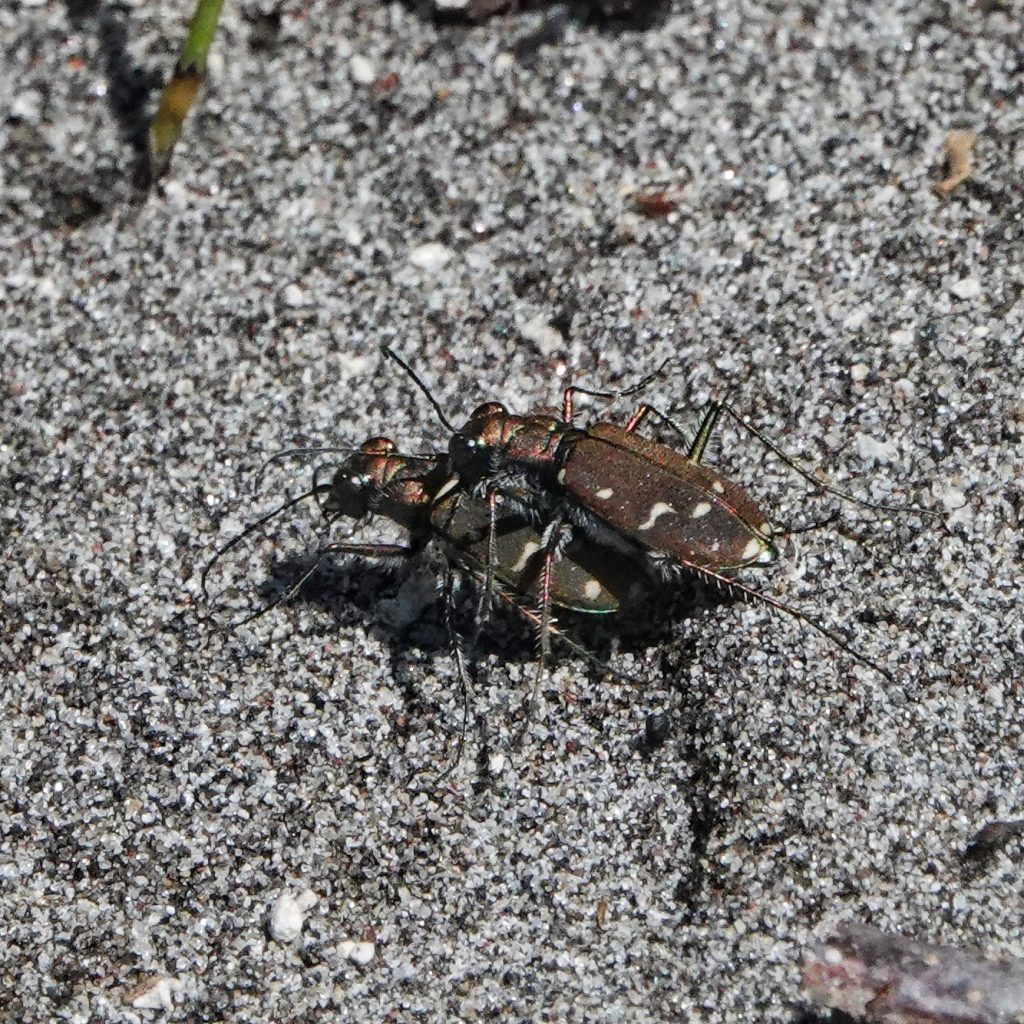
2 thoughts on “Cicindela oregona (Western Tiger Beetles)”